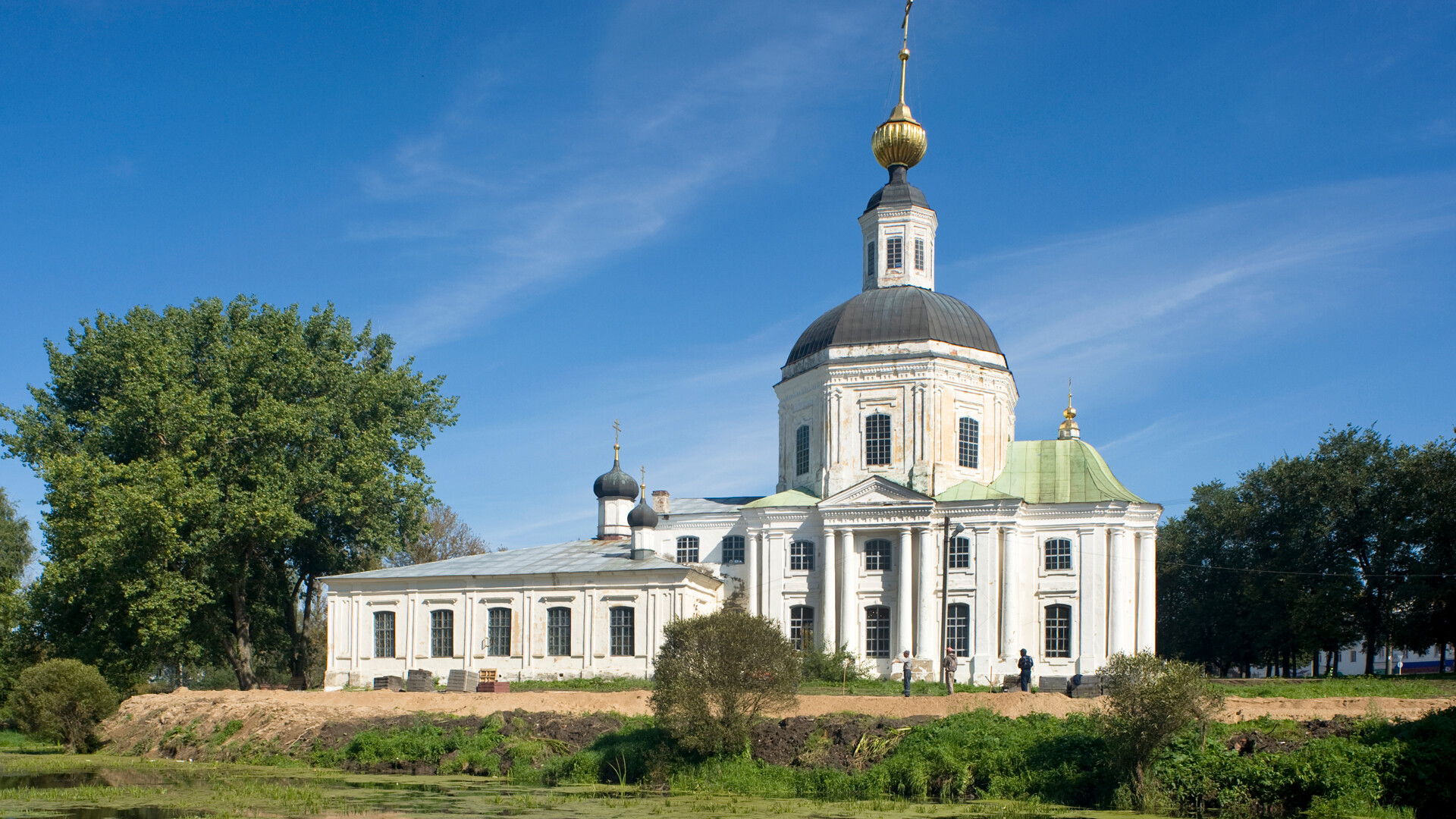
Church of the Nativity of the Virgin, south view. Foreground: Viazma River. August 22, 2012
William BrumfieldAt the beginning of the 20th century, Russian chemist and photographer Sergey Prokudin-Gorsky invented a complex process for vivid, detailed color photography (see box text below). His vision of photography as a form of education and enlightenment was demonstrated with special clarity through his photographs of architectural monuments in the historic sites throughout the Russian heartland.
One such settlement is the town of Vyazma, which Porkudin-Gorsky visited in the Summer of 1912 as part of a project to document sites connected with the centennial of the Napoleonic invasion of Russia. Although the original glass negatives have not survived in the Library of Congress collection of these photographs, monochrome contact prints that he made from the magenta segment of his three-separation process provide much historic detail. My own visits to Vyazma occurred between 1992 and 2014.
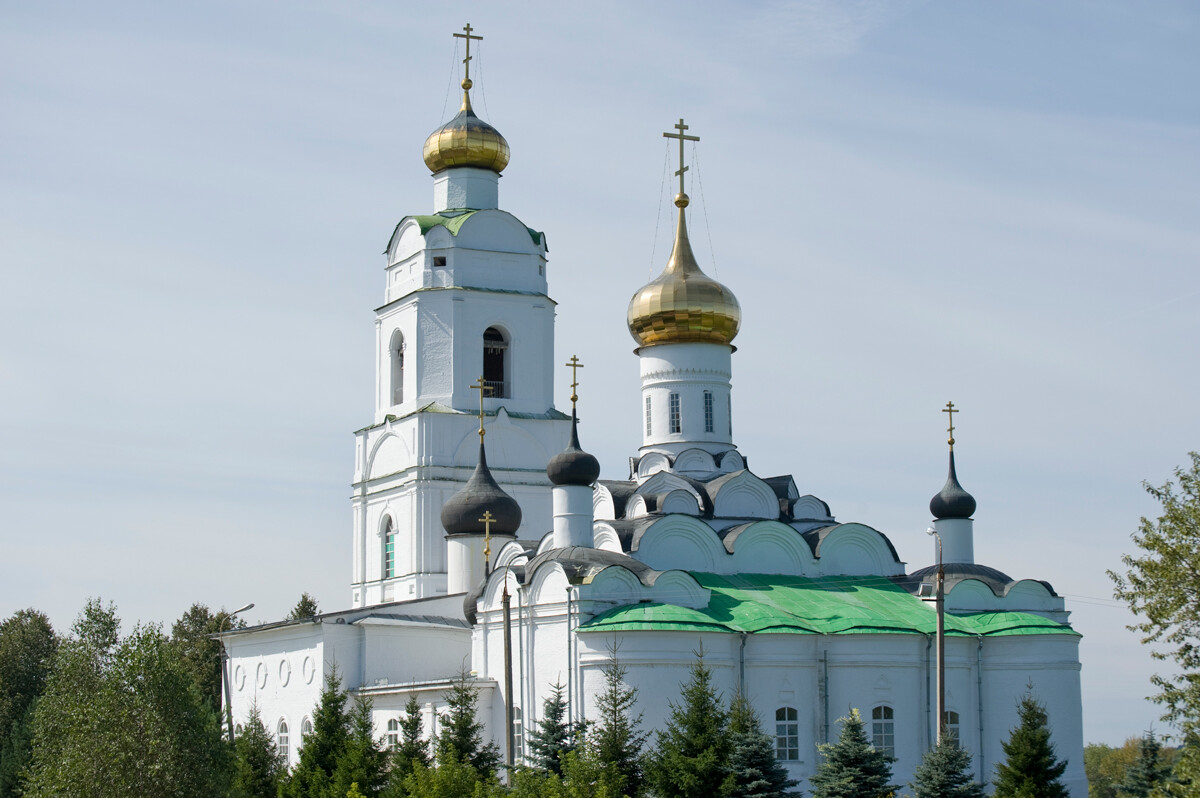
Vyazma. Trinity Cathedral, southwest view. August 22, 2012
William BrumfieldVyazma, today, is a placid regional center with a population of some 56,000 just off the Minsk Highway, the main road from Moscow to the West. Administratively a part of Smolensk Province, Vyazma is situated almost midway between these two ancient centers of Russia’s destiny - 210 km to the west of Moscow and 165 km to the east of Smolensk.
This location is the key to the town’s dramatic history, which, during World War II, witnessed the depths of defeat and the long road to recovery. Time has not dimmed the memory of that struggle, which is commemorated throughout the Vyazma region.
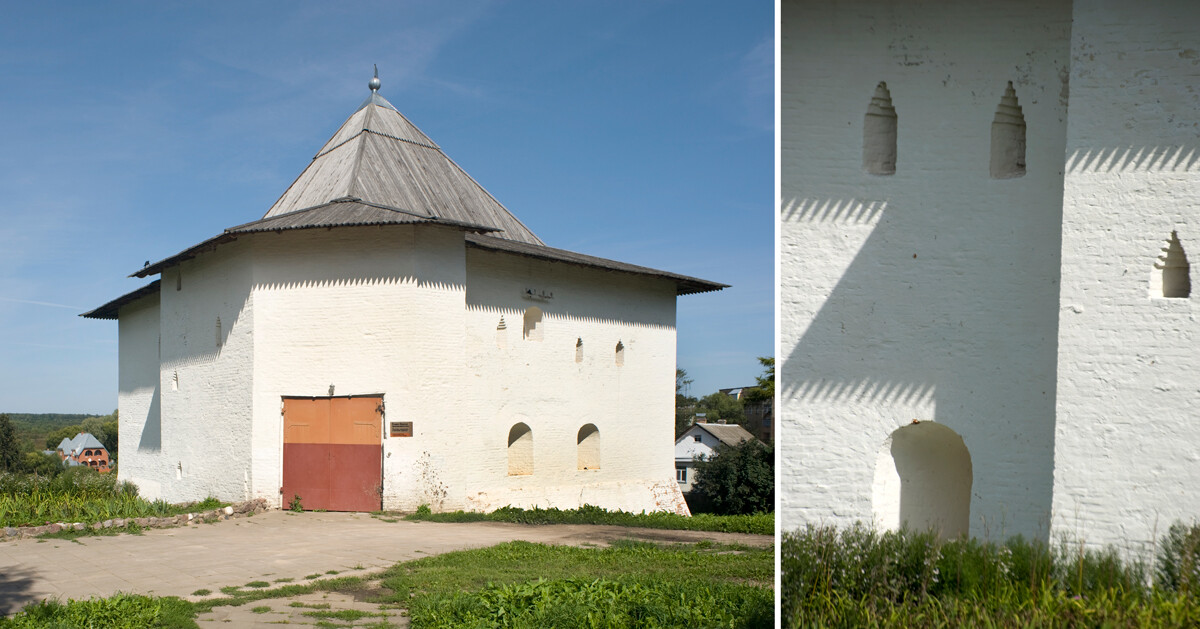
Vyazma fortress. Savior Tower, southwest view (L); Savior Tower, "shadow face." August 22, 2012
William BrumfieldThe first attested mention of Vyazma dates to 1239, a time that coincides with the Mongol invasion and the widespread destruction of an already fragmented medieval Rus’. The town remained a part of the Smolensk principality until 1403, when it was seized by the Grand Duchy of Lithuania.

Central Vyazma. Foreground: St. Arkady Monastery & its Church of the Most Merciful Savior Icon. The two churches in the middle were destroyed in the Soviet period. Right background: Church of the Transfiguration, which still exists, although without original bell tower. Summer 1912
Sergey Prokudin-GorskyBy the end of the 15th century, control of Vyazma shifted to Moscow, which gained the town in the course of an ongoing series of border wars with Lithuania. In the 16th century, it served as an important western defense point as Muscovy’s western boundary shifted and the much larger and more exposed fortress of Smolensk, at times, fell to Poland. During the ‘Time of Troubles’ in the early 17th century, the town was, again, caught in a bewildering series of shifting allegiances before serving the new Romanov dynasty.
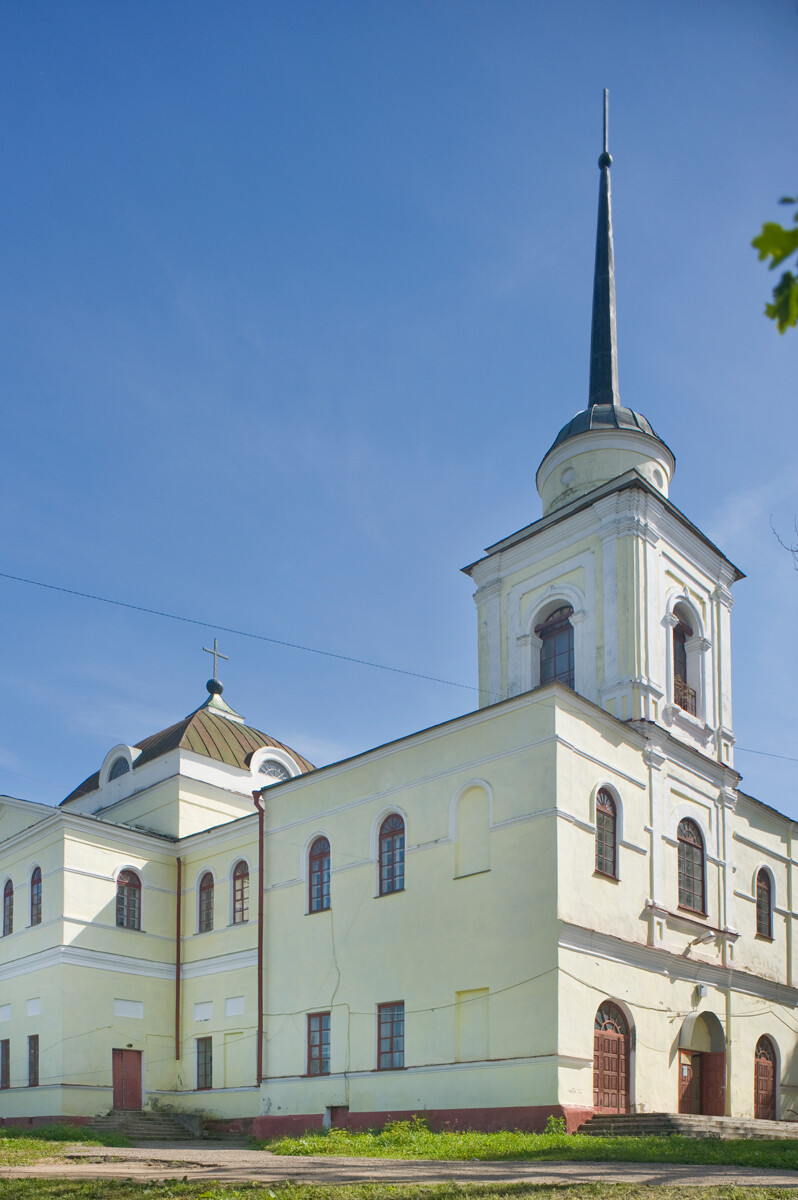
Church of the Icon of the Most Merciful Savior, St. Arkady Monastery. Northwest view. August 22, 2012
William BrumfieldFrom its beginnings, the center of town was an earthen fortress erected on a high cliff overlooking the Vyazma River. After the devastating wars of the 16th and early 17th centuries, Moscow decided to rebuild the kremlin, but without costly masonry walls. Only six towers were of brick, of which one remains: the Savior Tower.
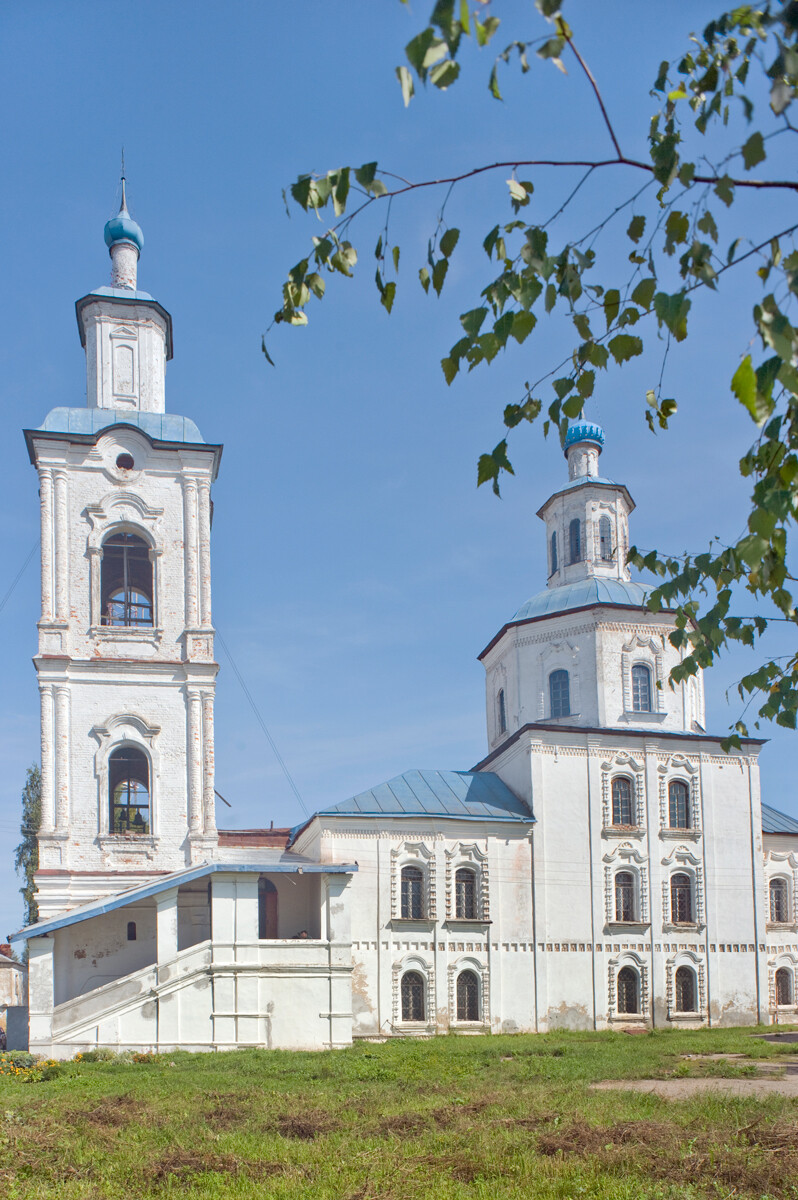
Church of the Epiphany (Presentation), south view. August 22, 2012
William BrumfieldThe Vyazma fortress contained a cathedral, ultimately dedicated to the Trinity. In 1654-1655, Tsar Aleksey Mikhailovich rebuilt the Trinity Cathedral in an archaic style and it was further modified and expanded in the mid-18th century. The bell tower was the town’s highest landmark until the erection of a large communications tower in the late Soviet period.
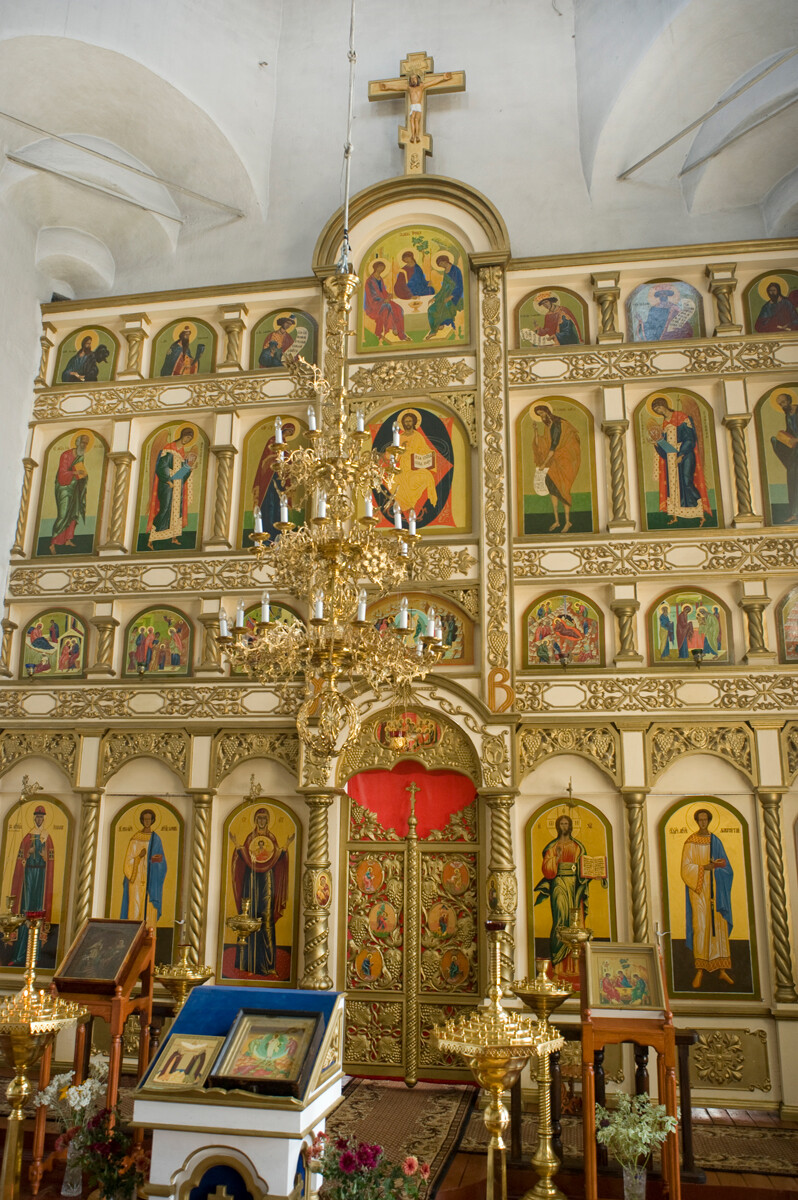
Church of the Epiphany (Presentation). New icon screen. August 22, 2012
William BrumfieldMost of the churches in Prokudin-Gorsky’s general view of central Vyazma were destroyed during the twentieth century. An exception is the church dedicated to the Icon of the Most Merciful Savior, built in 1786 at the St. Arkady Monastery. The only remaining structure from that monastery, the church now serves as the town library.
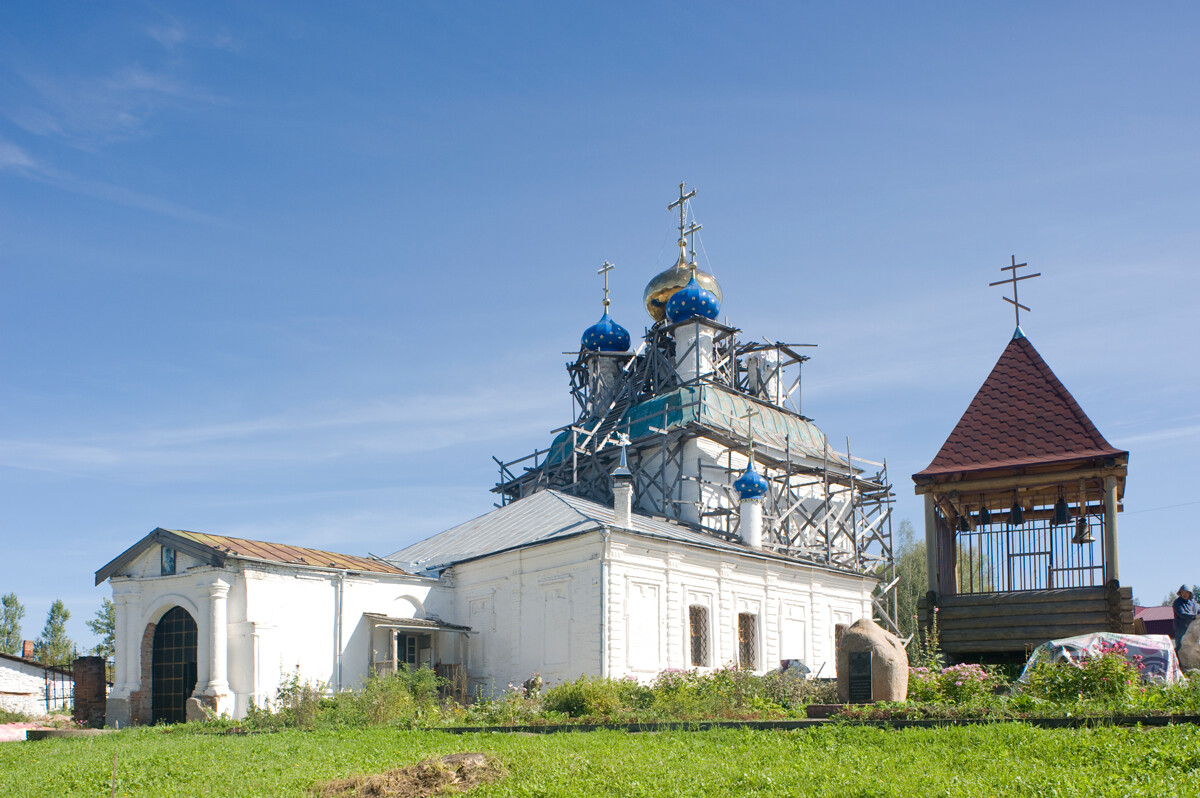
Church of the Transfiguration, with makeshift bell tower (right). Southwest view. August 22, 2012
William BrumfieldAlso nearby are monuments to the 1812 War. Vyazma fell to the French on August 29. Much of it was burned in late October, when pursuing Russian forces commanded by Generals Miloradovich and Platov engaged in a furious battle with a corps of the retreating French commanded by Marshal Davout.

Monument to Fatherland War (1812 Napoleonic invasion), Lenin Street (L). Monument to Pernovsky Grenadiers, Soviet Square. August 22, 2012
William Brumfield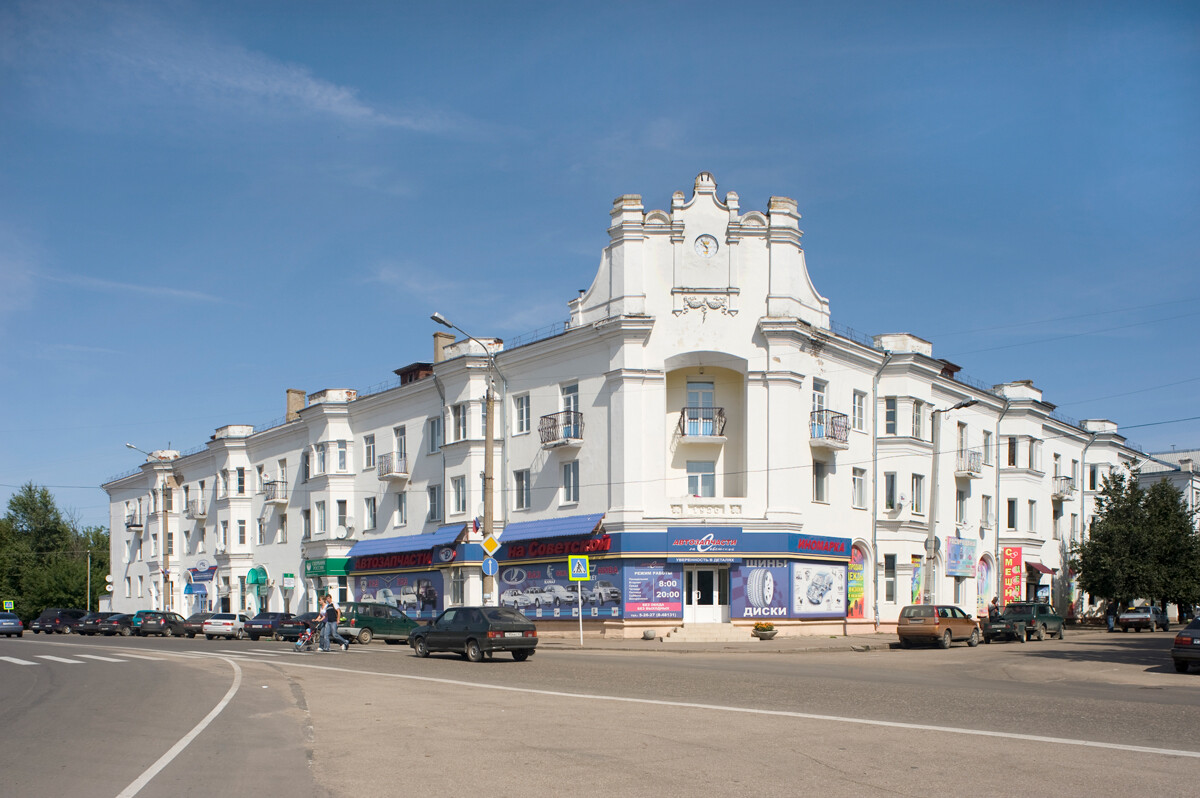
Apartment building & shops, Komsomol Street 2. Central part of the post-war reconstruction of the city. August 22, 2012
William BrumfieldToday, the town center is called Soviet Square, just down the hill from the cathedral. The square is dominated by a monumental granite column, erected in 2011 in honor of Vyazma’s designation two years earlier as a “City of Military Glory”. Severely damaged during the war, this part of town is a mixture of post-war Soviet architecture with 19th-century buildings rebuilt from the ruins.
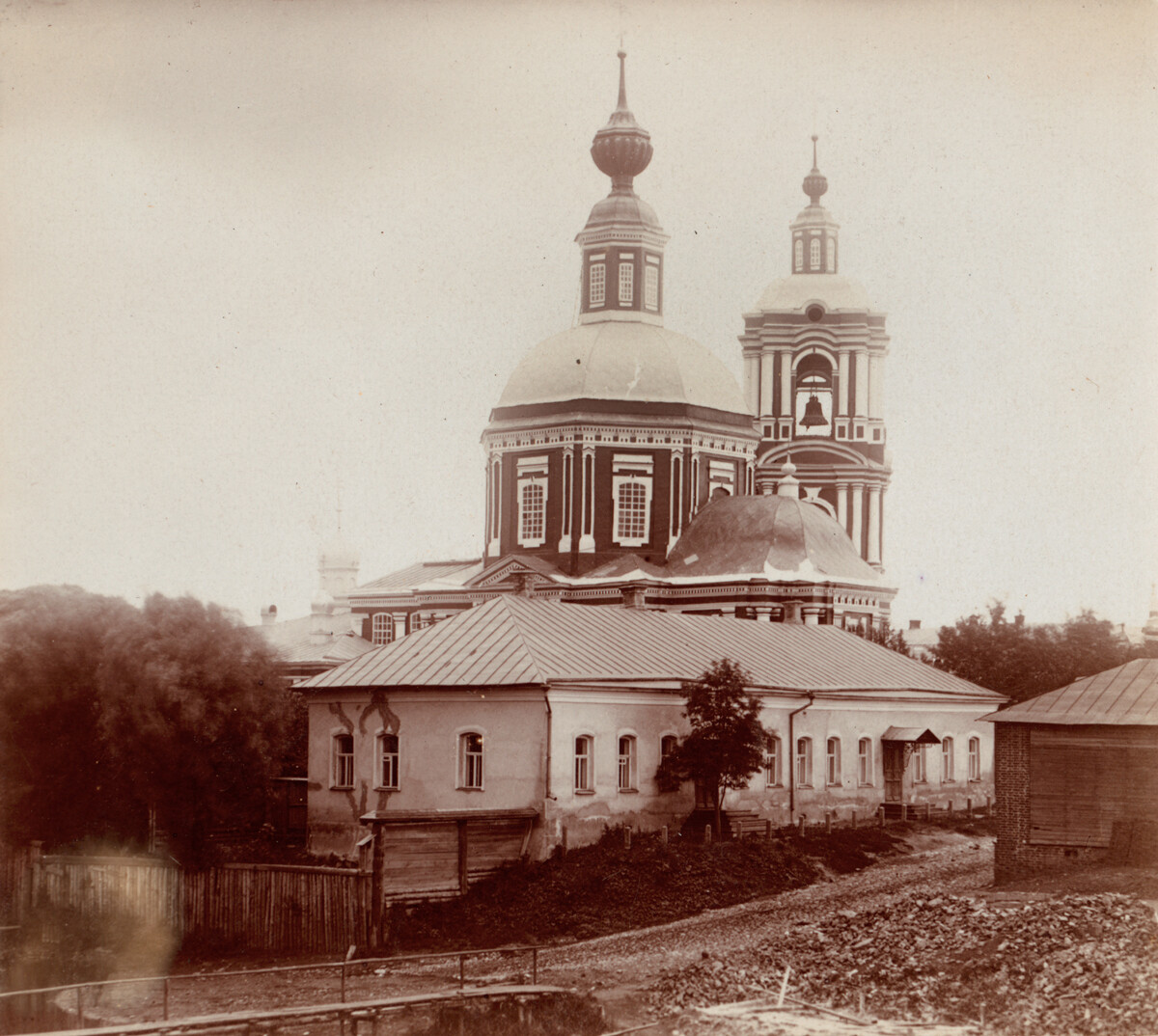
Church of the Nativity of the Virgin. Southeast view with bell tower. Summer 1912
Sergey Prokudin-GorskyA picturesque survivor is the Church of the Nativity of the Virgin (1727-1728), which Prokudin-Gorsky photographed from the northeast with a parish school and large pile of firewood in the foreground. It is now situated in a park whose pond offers a reflection of the south façade.

Church of the Nativity of the Virgin, south view. Foreground: Viazma River. August 22, 2012
William BrumfieldThe most impressive architectural ensemble in Vyazma is the John the Baptist Monastery (now convent) on the western edge of town.
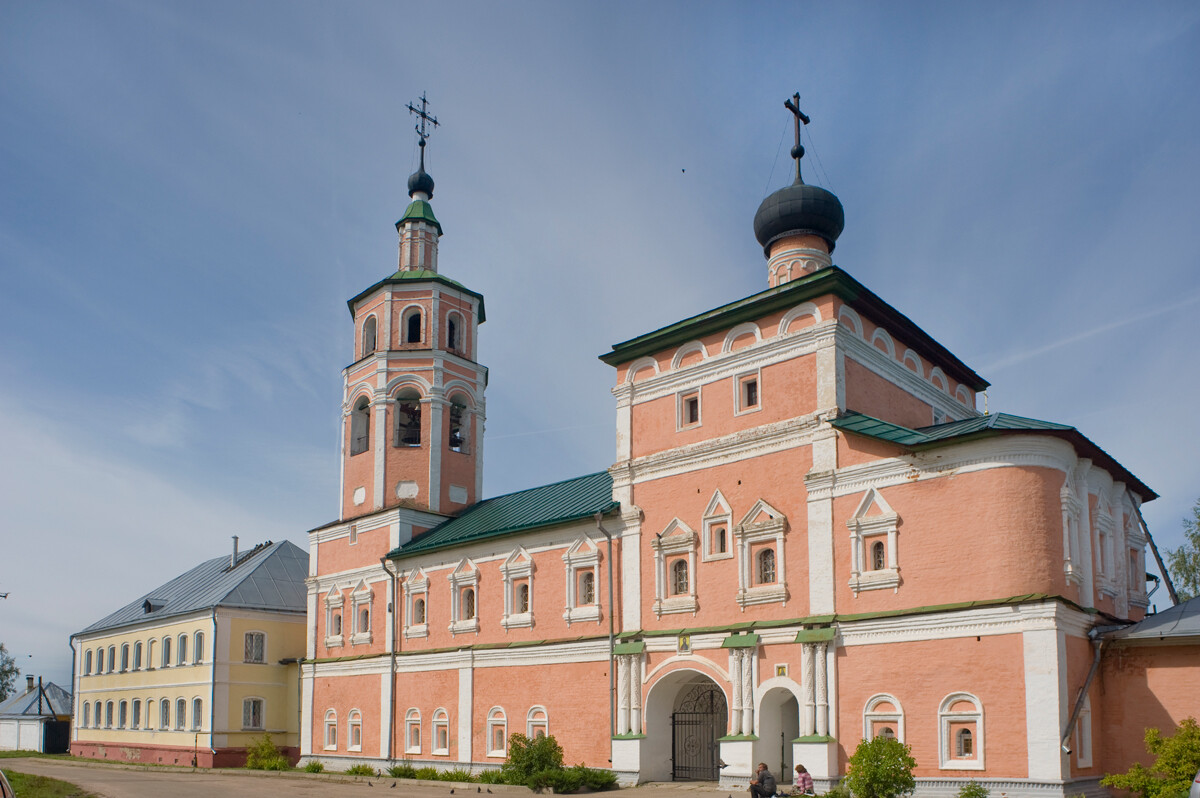
Gate Church of the Ascension, John the Baptist Monastery (Convent since 1995). Southeast view. August 22, 2012
William BrumfieldFounded in 1536, the monastery has undergone the many trials of this frequently invaded land. First, it was burned by Polish forces in the early 17th century, then rebuilt in the 1630s, thanks to a donation from Tsar Michael Fyodorovich (the first Romanov tsar). It was burned down again during the Napoleonic invasion of 1812 and repaired once more in 1832-36. The communists then closed it yet again and it was further damaged during World War II.
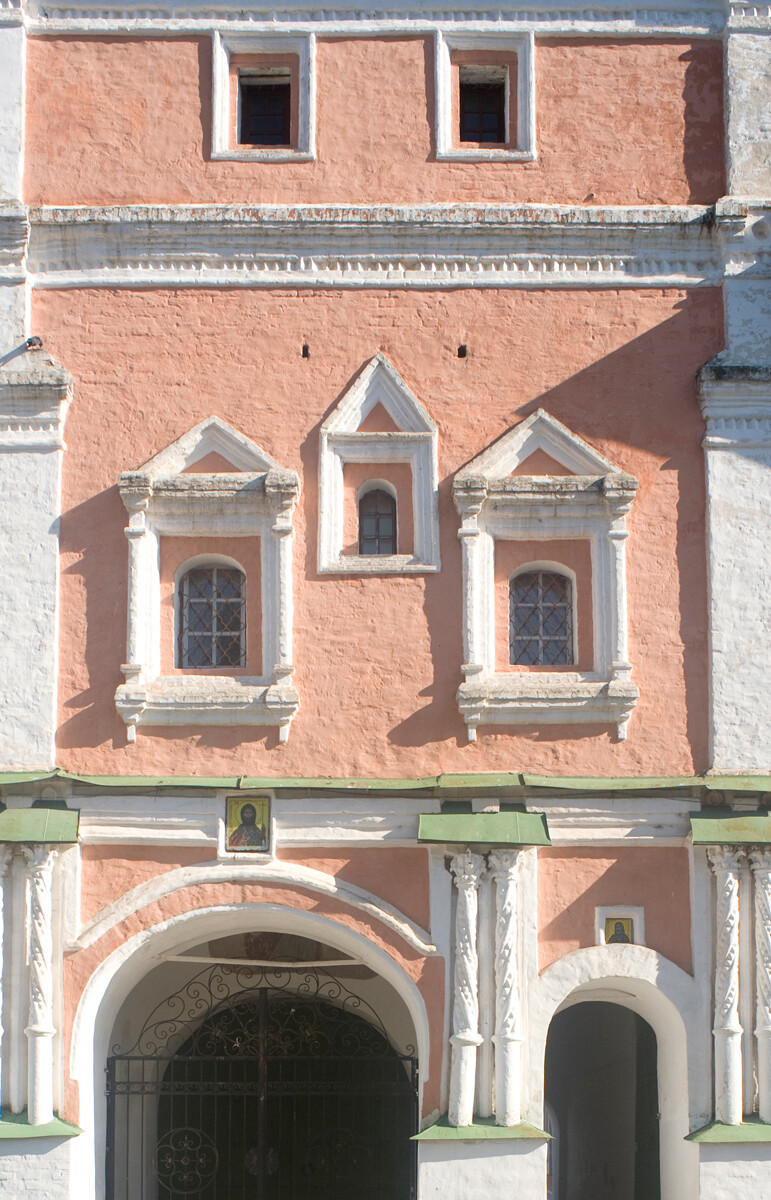
John the Baptist Monastery, Holy Gate beneath Church of the Ascension. South facade. August 22, 2012
William BrumfieldFortunately, the churches were well built and remained structurally sound. The main monastery gate on the south provides a base for the brightly painted Church of the Ascension, built in the mid-17th century with a large refectory and a bell tower at its west end.

Church of the Hodegetria Icon of the Virgin, John the Baptist Monastery. Southwest view with refectory (left). October 14, 1992
William BrumfieldOn entering the convent territory, the visitor is offered a view of one of the most distinctive monastic buildings in all of Russia, the Church of the Hodegetria Icon of the Virgin, with an attached chapel dedicated to John the Baptist.
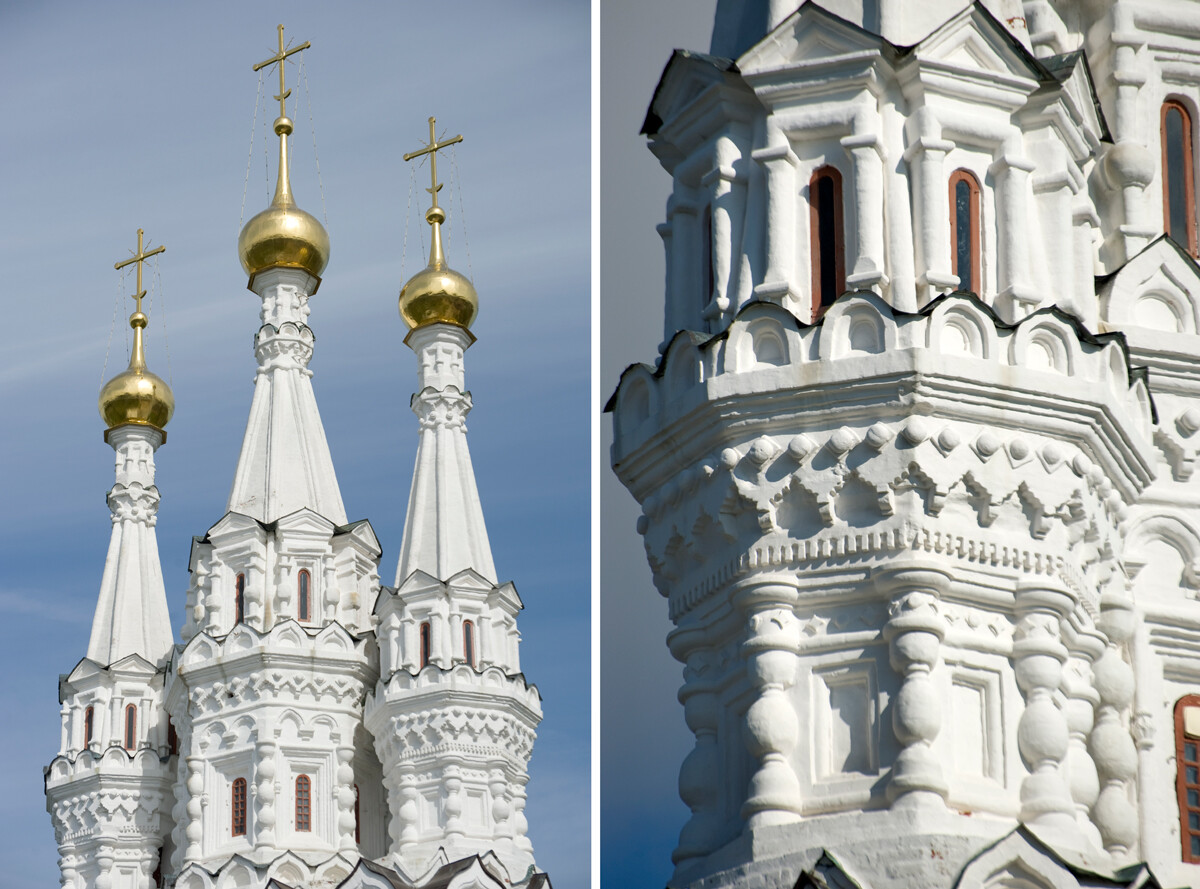
Church of the Hodegetria Icon, towers & crosses. Southwest view (L) and decorative detail on tower (R). August 22, 2012
William BrumfieldThis relatively small structure of irregular plan seems designed primarily as a pedestal for three soaring, richly decorated towers. Each tower is crowned with a small golden cupola.
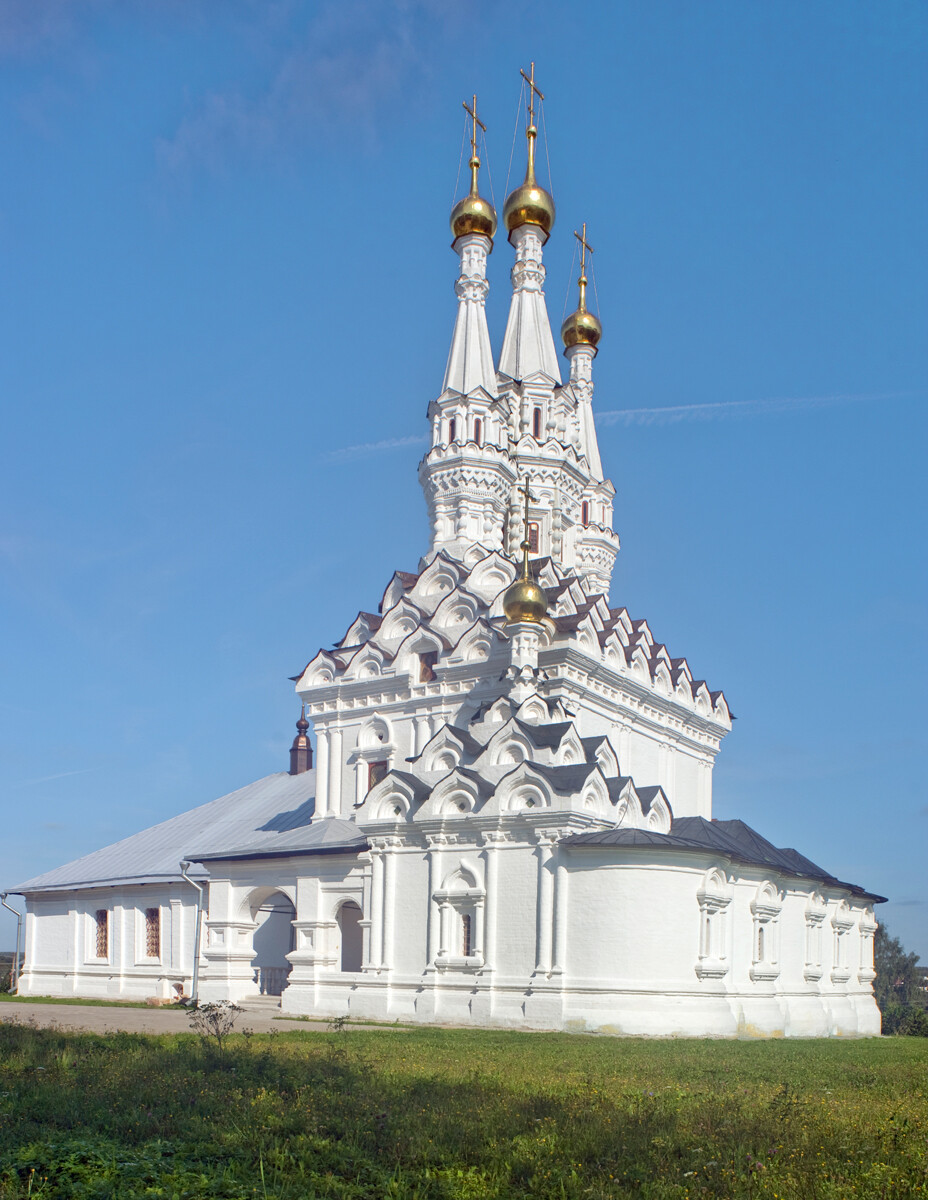
Church of the Hodegetria Icon. Southeast view. August 22, 2012
William BrumfieldThe rows of ornamental gables and the whitewashed walls are further ornamented with restored green ceramic tiles. Perhaps this exuberant design represents a beacon, as its dedication (hodegetria, “the one who shows the way”) suggests. Or, perhaps, it commemorates resistance to invaders, as do other tower churches built in Muscovy following the ‘Time of Troubles’.
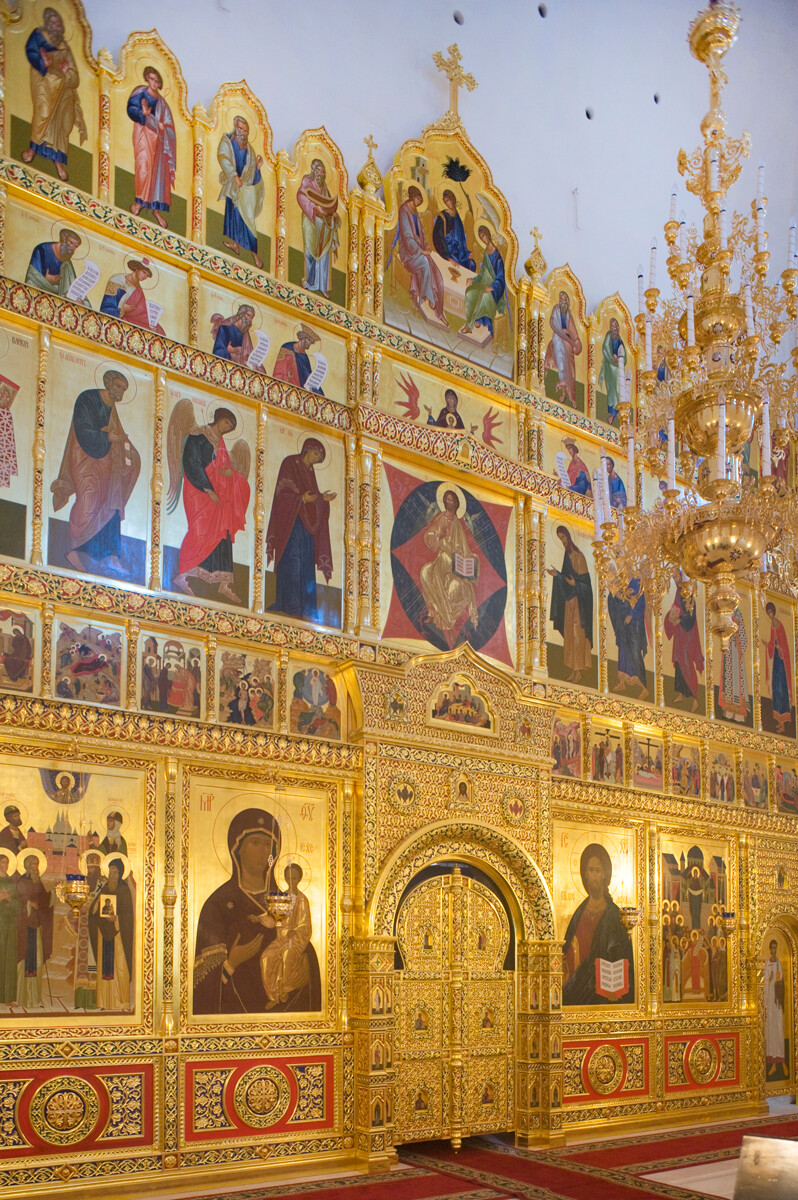
Church of the Hodegetria Icon. New icon screen. August 22, 2012
William BrumfieldA number of the town’s churches are now being restored after decades of war, neglect and religious persecution during the Soviet period. Others remain in picturesque ruin, such as the cemetery Church of St. Catherine (1770-76). The damage in Vyazma was particularly severe and the process of recovery is often gradual.
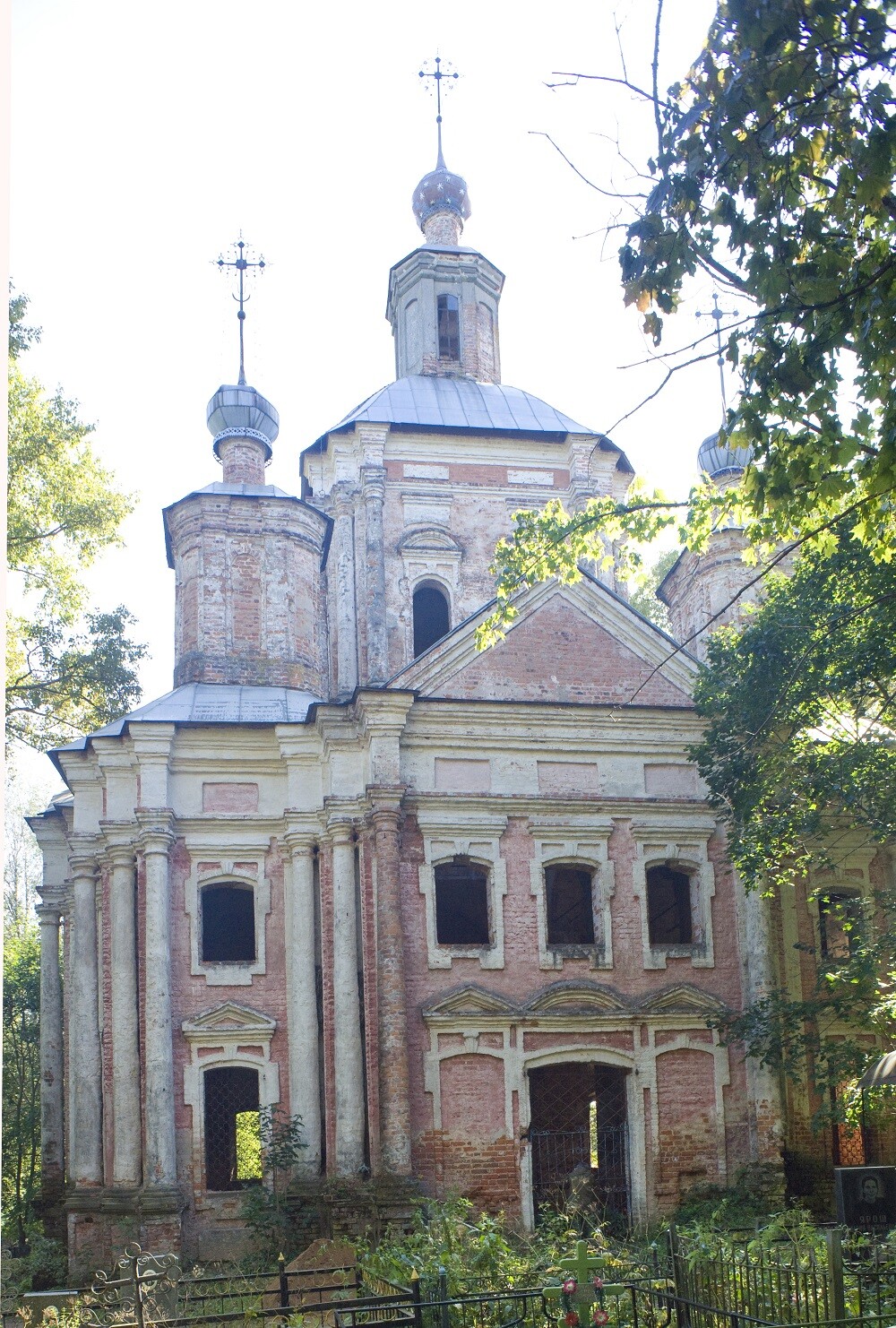
Cemetery Church of St. Catherine. West view. August 22, 2012
William BrumfieldThe preceding survey has focused on architectural monuments, but Vyazma also has an extraordinary monument of sculpture dedicated to General Mikhail Yefremov, commander of the ill-fated 33rd army, surrounded during the second battle of Vyazma in the Spring of 1942.
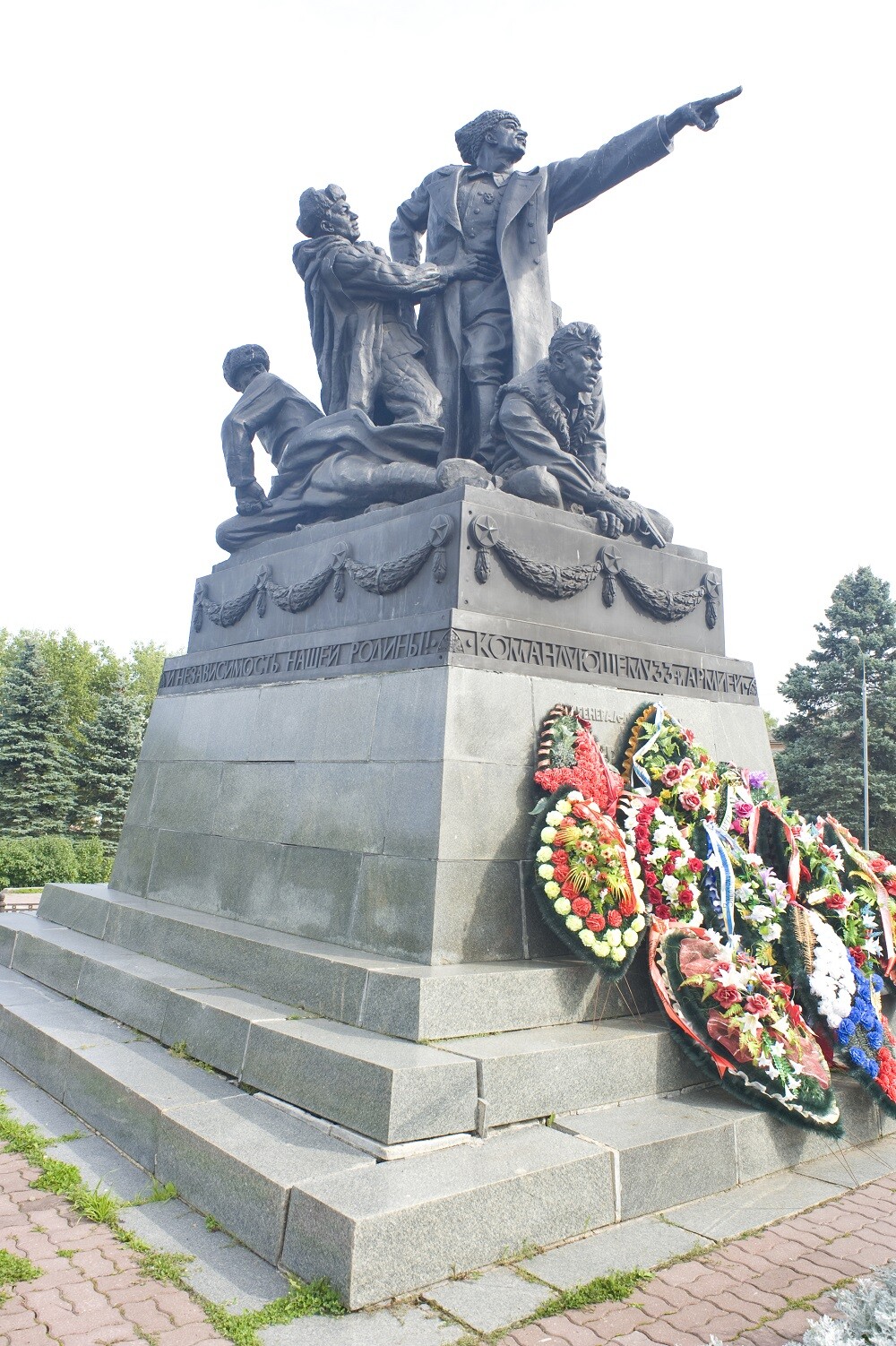
Monument to General Mikhail Yefremov (1897-1942). August 22, 2012
William BrumfieldCreated by the sculptor Yevgeny Vuchetich (primary author of the later Stalingrad memorial complex) and erected in a still ruined Vyazma in 1946, the statue is one of the finest examples of heroic military sculpture in Russia. The defiant Yefremov stands with arm outstretched, pointing toward the west. He is symbolically flanked and protected by four Red Army soldiers in tense poses with weapons at ready. One of the soldiers, mortally wounded, gazes up at the general. After the final liberation of Vyazma in March 1943, Yefremov’s body was reburied at the cemetery adjacent to the Church of St. Catherine.
Vyzama Region contains other easily accessible sites of interest, including the beautifully restored Griboyedov estate at Khmelita. In the early 19th century, the estate was closely associated with the beloved writer Alexander Griboyedov (1795-1829), author of ‘Woe from Wit’, one of Russia’s best-known plays. It deserves further exploration.
In the early 20th century, the Russian photographer Sergey Prokudin-Gorsky developed a complex process for color photography. Between 1903 and 1916, he traveled through the Russian Empire and took over 2,000 photographs with the process, which involved three exposures on a glass plate. In August 1918, he left Russia and ultimately resettled in France where he was reunited with a large part of his collection of glass negatives, as well as 13 albums of contact prints. After his death in Paris in 1944, his heirs sold the collection to the Library of Congress. In the early 21st century the Library digitized the Prokudin-Gorsky Collection and made it freely available to the global public. A few Russian websites now have versions of the collection. In 1986 the architectural historian and photographer William Brumfield organized the first exhibit of Prokudin-Gorsky photographs at the Library of Congress. Over a period of work in Russia beginning in 1970, Brumfield has photographed most of the sites visited by Prokudin-Gorsky. This series of articles juxtaposes Prokudin-Gorsky’s views of architectural monuments with photographs taken by Brumfield decades later.
If using any of Russia Beyond's content, partly or in full, always provide an active hyperlink to the original material.
Subscribe
to our newsletter!
Get the week's best stories straight to your inbox